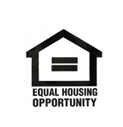The American Dream of owning a home has long been a cornerstone of the country’s culture and identity. For many Americans, owning a home represents stability, security, and a sense of accomplishment. It is seen as a symbol of success and a way to build wealth for future generations. However, the dream of homeownership has become increasingly challenging to attain in recent years. The current state of homeownership in the United States is a mixed bag. On one hand, the homeownership rate has been steadily increasing over the past few years. According to the U.S. Census Bureau, the homeownership rate reached 65.8% in the second quarter of 2023, up from 64.1% in the same period last year. This is a positive sign that more Americans are able to achieve their dream of owning a home. However, there are still significant barriers to homeownership for many Americans. The rising cost of housing, stagnant wages, and high levels of student loan debt are just a few of the factors that make it difficult for people to save for a down payment and qualify for a mortgage. Additionally, the recent increase in mortgage rates has made it even more challenging for potential homebuyers to enter the market.
The Impact of High Mortgage Rates on Homeownership
Mortgage rates play a crucial role in determining the affordability of homeownership. When mortgage rates are high, it becomes more expensive for borrowers to finance their home purchases. This can deter potential buyers from entering the market or force them to settle for smaller or less desirable homes. The impact of high mortgage rates on the housing market can be significant. Higher rates can lead to a decrease in demand for homes, which can result in a slowdown in home sales and a decline in home prices. This can have a ripple effect on the overall economy, as the housing market is closely tied to other sectors such as construction, real estate, and finance. There are many reasons behind the increase in mortgage rates in 2023. One of the main factors is the Federal Reserve’s decision to raise interest rates in response to a strengthening economy and rising inflation. Higher interest rates make borrowing more expensive, including mortgages. Additionally, the increased demand for housing coupled with a limited supply of homes has put upward pressure on prices, which in turn has led to higher mortgage rates.
Historical Trends in Mortgage Rates and Homeownership
To understand the current state of homeownership and mortgage rates, it is important to look at historical trends. Over the past few decades, mortgage rates have fluctuated significantly. In the 1980s, mortgage rates reached record highs, with some rates exceeding 18%. This made homeownership unaffordable for many Americans and led to a decline in the homeownership rate. Since then, mortgage rates have generally trended downward. The early 2000s saw historically low rates, which contributed to a boom in the housing market. However, this was followed by the subprime mortgage crisis and the Great Recession, which led to a sharp increase in foreclosures and a decline in homeownership. In recent years, mortgage rates have remained relatively low by historical standards. This has helped to fuel the housing market recovery and increase homeownership rates. However, with rates starting to rise again in 2023, new challenges arose for potential homebuyers.
The Current State of the Housing Market in 2023
The current state of the housing market in 2023 is characterized by high demand and limited supply. The pandemic fueled a desire for more space and a shift towards remote work, leading many people to reconsider their living arrangements. This has resulted in increased demand for single-family homes, particularly in suburban and rural areas. At the same time, the supply of homes for sale has been constrained. Builders have struggled to keep up with demand due to labor and material shortages, as well as rising construction costs. The result is a shortage of inventory, driving up home prices and creating a competitive market for buyers. The combination of high demand and limited supply has contributed to the increase in mortgage rates. As buyers compete for a limited number of homes, they are willing to pay higher prices, which in turn drives up mortgage rates. This has made it more difficult for potential homebuyers to enter the market, particularly first-time buyers who may have limited resources.
The Role of Government Policies in Homeownership
Government policies have played a significant role in promoting homeownership in the United States. One of the most well-known government programs is the Federal Housing Administration (FHA), which provides mortgage insurance to lenders and makes homeownership more accessible to low-income and first-time buyers. Other government programs, such as the Veterans Affairs (VA) loan program and the U.S. Department of Agriculture (USDA) Rural Development program, also help to promote homeownership by providing financing options for specific groups of borrowers. In addition to these programs, the government has implemented various policies to support the housing market, such as tax incentives for homeownership and regulations to protect consumers from predatory lending practices. These policies aim to make homeownership more affordable and accessible for all Americans. However, government policies can also have unintended consequences. For example, some argue that the government’s push for homeownership in the early 2000s contributed to the subprime mortgage crisis and the subsequent housing market collapse. It is important for policymakers to strike a balance between promoting homeownership and ensuring responsible lending practices.
The Impact of Economic Factors on Mortgage Rates
Economic factors play a significant role in determining mortgage rates. When the economy is strong and inflation is rising, the Federal Reserve may raise interest rates to prevent the economy from overheating. This can lead to an increase in mortgage rates, as lenders pass on the higher borrowing costs to consumers. Conversely, when the economy is weak and inflation is low, the Federal Reserve may lower interest rates to stimulate economic growth. This can result in lower mortgage rates, making homeownership more affordable for borrowers. Other economic factors, such as employment levels, wage growth, and consumer confidence, can also influence mortgage rates. When the job market is strong and wages are rising, more people are able to afford homes and demand for housing increases. This can put upward pressure on prices and lead to higher mortgage rates.
The Pros and Cons of Renting vs. Owning a Home
The decision to rent or own a home is a personal one that depends on individual circumstances and preferences. There are pros and cons to both options that should be considered. One of the main advantages of renting is flexibility. Renters have the freedom to move more easily, which can be beneficial for those who need to relocate frequently for work or personal reasons. Renting also requires less upfront costs, as renters typically do not need to make a large down payment or pay for maintenance and repairs. On the other hand, owning a home offers a host of advantages as well. Homeowners have the opportunity to build equity and potentially benefit from appreciation in home values. They also have more control over their living space and can make modifications and improvements as they see fit. Homeownership provides a sense of stability and security, as long as mortgage payments are made on time. However, there are also downsides to homeownership. Homeowners are responsible for maintenance and repairs, which can be costly and time-consuming. They also face the risk of declining home values, which can result in negative equity if they need to sell their home. Additionally, homeownership ties up a significant amount of capital in a single asset, which can limit financial flexibility.
The Future of Homeownership in the United States
The future of homeownership in the United States is uncertain. On one hand, the desire for homeownership remains strong, particularly among younger generations who view it as a key part of the American Dream. Our experiences during the pandemic have also highlighted the importance of having a safe and stable home. However, there are challenges looming that could impact the future of homeownership. The rising cost of housing, particularly in desirable areas, is a major barrier for many Americans. Young people struggling with stagnant wages and student loan debt are finding it difficult to save for a down payment and get qualified for a mortgage. Additional factors such demographic shifts, an aging population, and changing household structures could impact the demand for homeownership. The trend among younger generations to delay marriage and start families later in life, affects their desire and ability to own a home.
Strategies for Overcoming High Mortgage Rates
While high mortgage rates can make homeownership more challenging, there are strategies that potential homebuyers can use to overcome this obstacle. One strategy is to improve your credit score. Lenders typically offer lower interest rates to borrowers with higher credit scores, as they are seen as less risky. Paying off debt, making all payments on time, and keeping credit card balances low can help improve your credit score and qualify for a lower mortgage rate. Another strategy is to shop around for the best mortgage rate. Lenders offer a variety of rates and terms, so it is important to compare offers from multiple lenders to ensure you are getting the best deal. Working with a mortgage broker can also help you navigate the mortgage market and find the best rate for your situation. Saving for a larger down payment can also help lower your mortgage rate. Borrowers who can put down a larger down payment are more attractive to lenders and get better mortgage rates because there is reduced risk for the lender. Saving for a down payment can be difficult, but cutting back on expenses, increasing your income, and taking advantage of down payment assistance programs can help you reach your goal.
The American Dream of owning a home is still attainable, but it is becoming increasingly challenging for many Americans. Sylvia Alvarez, Executive Director of the Housing and Education Alliance encourages prospective homebuyers to stay abreast of the most current information about housing and mortgage trends. “The desire for homeownership remains strong,” says Alvarez. “With the right strategies and support, more Americans can achieve their dream of owning a home.”
The Housing and Education Alliance is a Strategic Partner of Nuevo en US (www.nuevoenus.org), an organization that welcomes our newest neighbors and supports nonprofits that assist them. Nuevo and HEA acknowledge their debt to Car Credit (www.carcredittampa.com) for funding their important work in the Tampa Bay community.








